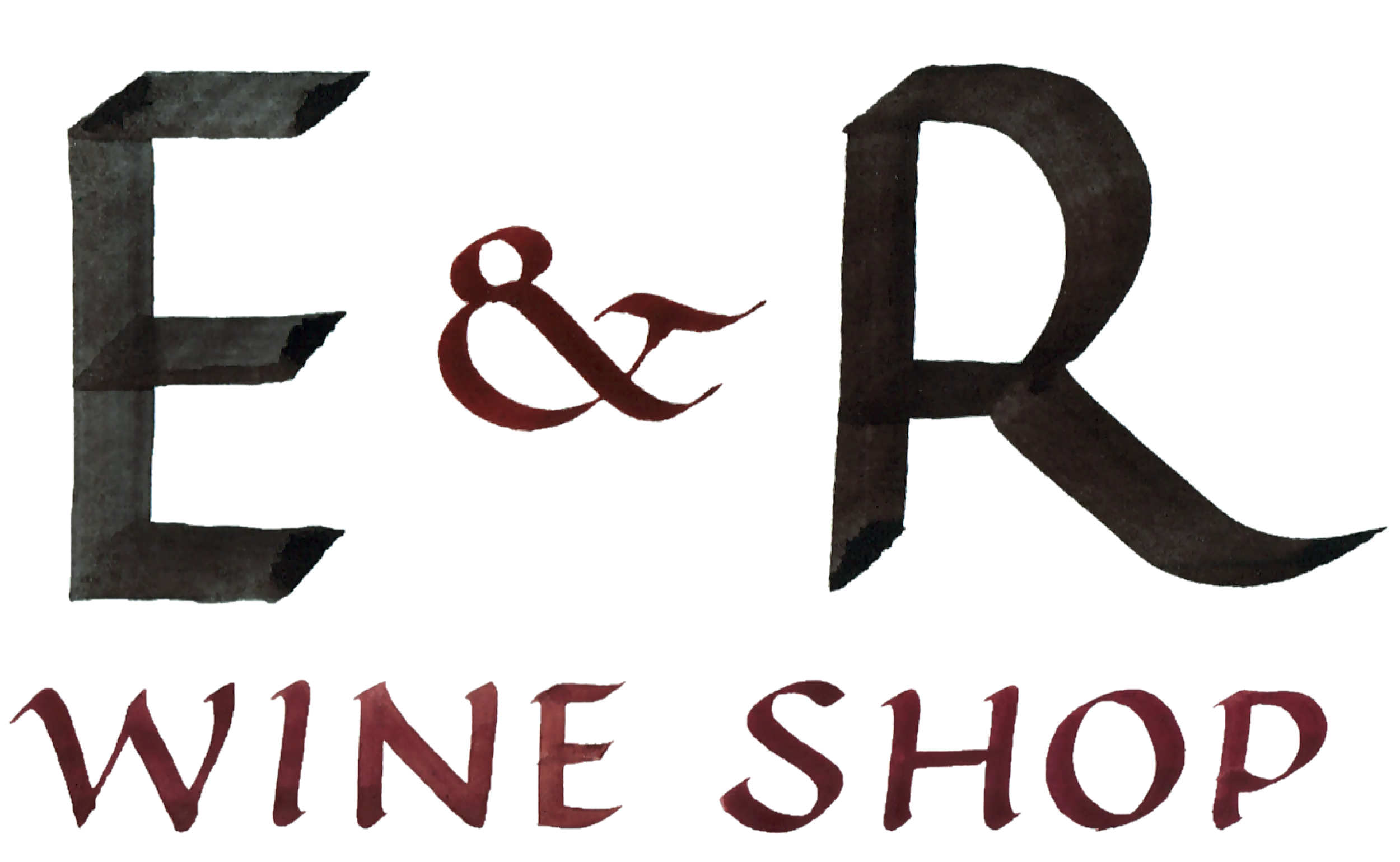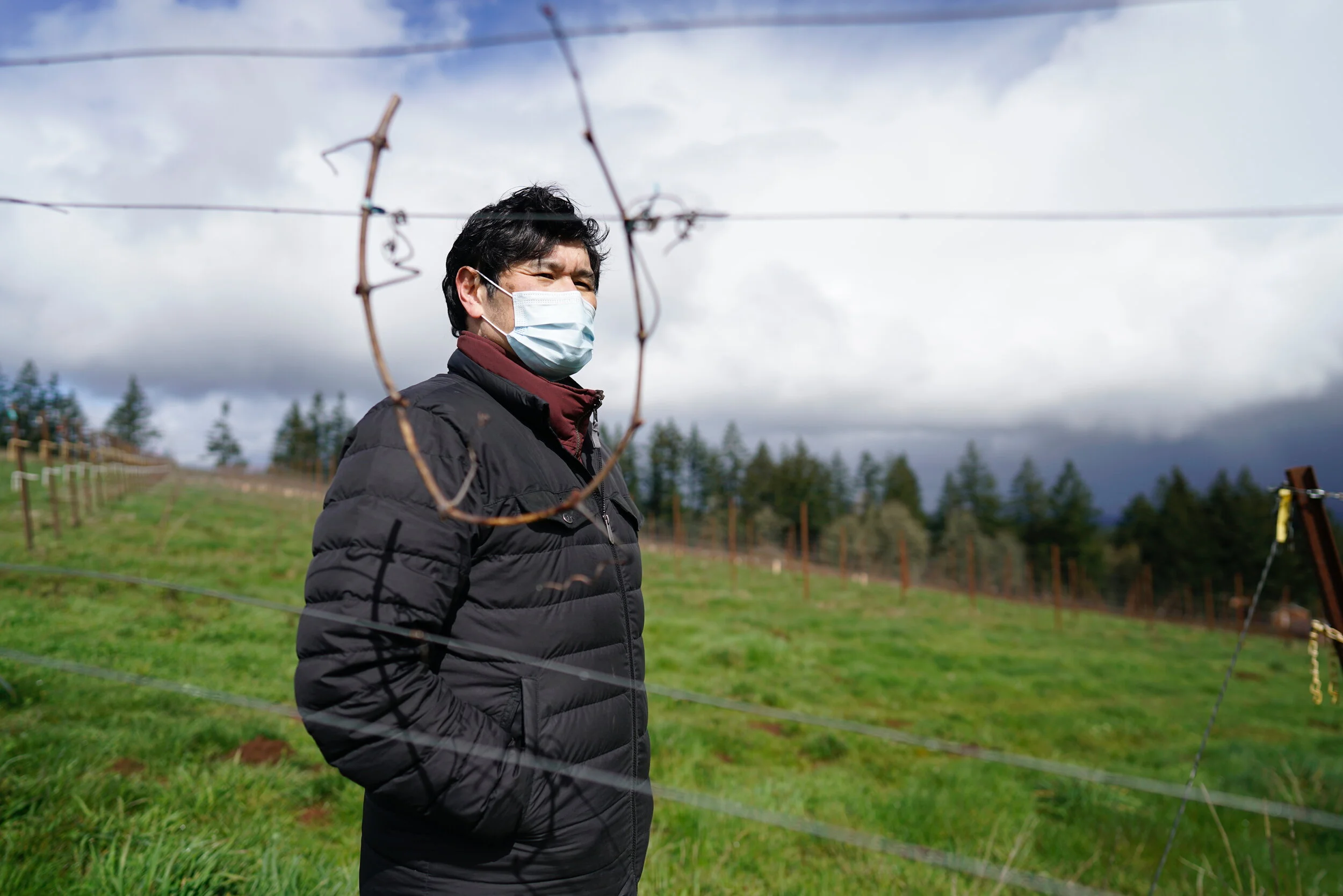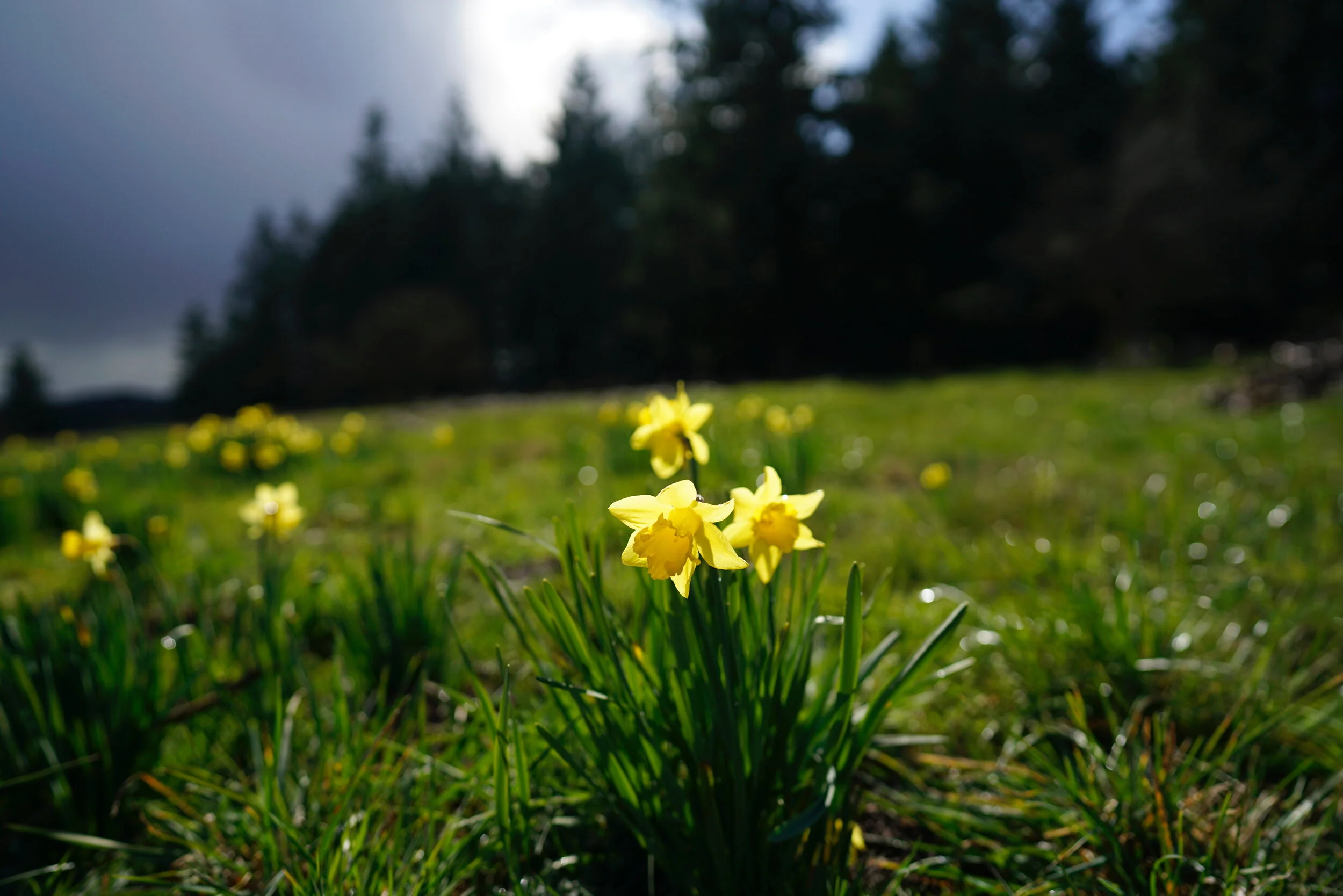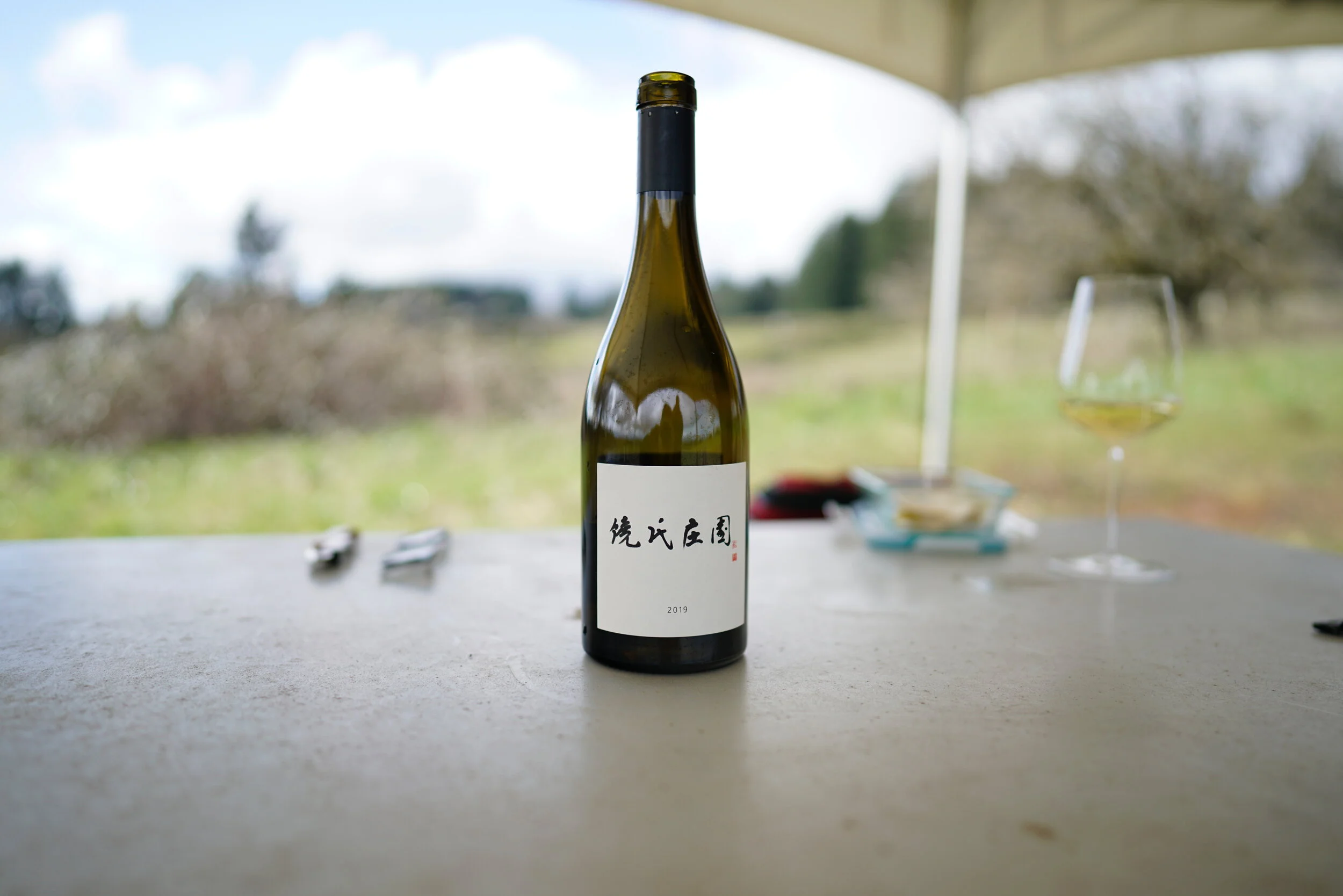Niew Vineyards - Chehalem Mountains, Willamette Valley, OR
Last week we visited with winemaker Tai-Ran Niew at his vineyard on Parrett Mountain. This was our first visit with a winemaker in over a year after covid isolation — a fresh March day soaked in rain, touched with daffodils on the hillside, and a bottle of freshly-bottled Oregon chardonnay waiting on a table in a vineyard lean-to. In Oregon’s many mountain-facing areas (the window at E&R is one of them), the sky is enormous, even when rainy and filled with clouds. Tai-Ran explained that the patch of daffodils has been undisturbed for 100 years, planted by the family that once lived on the property. Nothing could be as enticing as chardonnay that tastes somewhere between the heavy grey clouds and radiant yellow daffodils.
Tai-Ran Niew’s vineyard is located on Parrett Mountain, a high point in the Chehalem mountains just a half hour south of Portland. The vineyard is nestled between Newberg and Sherwood. Like some of Oregon’s most beloved growing areas, the soil is iron-rich Jory soil. In the wet Oregon afternoon, the spongy earth looks nearly purple on the paths. Prior to Tai-Ran buying the property, it was owned by a family who harvested some of the trees on the property for lumber. It laid untouched for years, and many native plants and animals re-joined the scene.
Winemakers still are innovating in isolation, vines are growing, life is happening! This growth has always happened slowly and cyclically. The mystery of grapegrowing is this: how does one give the vines the right amount of guidance to get the wine in the glass?
We walked over the crest of the hill topped with daffodils toward an east-facing planting of Chardonnay. Here grow 5 acres of chardonnay, many native species of plants and trees, and a flock of goats. Tai-Ran has decided to focus on farming chardonnay only. I asked why — “there’s only one of me!” he replies. There is only so much time in a lifetime to create a sense of focus.
To farm “one” variety for him still holds the multiplicity of 12 clones of chardonnay and the wildness of an entire site. It also holds important ways of living and working for him. Printed on the label is an imprint of a stone seal of the Chinese character 静, jìng, which has a broad meaning but encompasses the life that Tai-Ran hopes to live while doing this work: the importance of being serenely aware. While a farmer’s work fundamentally involves mystery and changes, it also allows for constant observation and encourages a sensitivity to change.
We ask Tai-Ran if he plans to grow the size of his vineyard much — he says not really, he prefers to “farm intimately” and to be able to do all or most of the work himself by hand. This is all happening now, though now there is ever work to do. Tai-Ran’s pruning work will start in the spring — he prefers to prune a bit later in the season. Pruning a bit later avoids some trunk disease issues. He also has a presence of blackberry vines in the vineyard. He recalls a anecdote about visiting David Leclapart in Champagne, who suggests that a farmer should pay close attention to which plants grow extremely well on their land. Notice what present conditions choose to form.
He says so beautifully himself: At all times, the pace and dynamic of work, should be inquisitive, peaceful and calm. We don’t grow grapes or make wine, we create the environment for the vines and wine to thrive. That is the essence of our ethos.
Oregon’s viticultural history only spans the last two hundred years, with its biggest period of growth in the last 50 or so years. With a love of Oregon chardonnays from Eyrie and Cameron, and a collegial relationship with Lingua Franca, Tai-Ran hopes to bring sense to investigate whether Oregon has long-term potential for chardonnay. He realizes that something other than Chardonnay could be the way forward, but finds that his experimentation and work will be richer the more he asks specific questions of the one variety.
After all, the one-ness of this variety have as much to do with the place it’s grown as it does the grape itself. Following in the farming practice of Masanobu Fukuoka and Mimi Casteel, and a view that all grapes need to grow is water, air, and sunlight, he views his vineyard as an interwoven web of living and dead things. He chooses not to till the soil. When he planted the 5 acres of chardonnay on the hill, he did so without the use of machines or chemicals. This care allowed for the vineyard to retain native species. Because the property had lain fallow for about a decade prior to the planting, the native species were quite robust when he first encountered the property.
When starting the vineyard, Tai-Ran did a lot of research into biodynamics but found the work to be “blindly prescriptive”. He said, I was doing a lot of biodynamic research, then my wife bought a copy of “One Straw Revolution” for me, and it was the contrast between the two that was revelatory. His philosophy is so so much more scientific and elegant. I didn’t know if it would work with a vineyard, but it was so intriguing that I had to try.
As we walked around the vineyard, Tai-Ran pointed out that many of the vines are dying or that there are huge differences in vigor. Either the vines will live or they will die, and he hopes to observe them without being reactive, to be patient. Once the vines have matured he will create massale selections from the vineyard for any future plantings. Theoretically, these will be better-suited to the site as they will be the “children” of the vines he is now farming.
This may never be an extravagantly-yielding vineyard. Since he bought the property in 2013, there has been just one sulfur spray on the vines. He has found some good effects spraying milk in the vineyards, as have winemakers like Jason Lett at Eyrie. Where some of his neighbors have sprayed sulfur sixteen times in a season, Tai-Ran has not sprayed it except once during the very first year. The work of Casteel and Fukuoka lead him to trust that the plants and broader ecosystem will have richer lives the less he intervenes with them. However, Oregon’s winegrowers often do not have the longevity of the grapevines in mind. They will sometimes opt for techniques which will combat powdery mildew in the short term versus techniques that will establish vines with longevity.
For now, the vines are in their infancy. They are yielding grapes (a phrase that Tai-Ran verbally punctuates with an exclamation point no matter how little they may be yielding), though a very small amount. This means he is doing something right. Fukuoka was writing about rice and Tai-Ran is farming vines — but both suspect that the less they do to the plants the more at home they will be in the vineyard
He wants to make wine and hone his familiarity with Oregon chardonnay while waiting for his vines to mature. For this aspect of his project, pick date is the essential choice: harvest on acidity versus sugar levels. The 2019 chardonnay hits a great stride into richness and salinity after a spring of acid up front, glowy and warm. He produced a 2019 chardonnay with grapes sourced from the Lingua Franca LS estate in the Eola-Amity hills.
The labels are a printed version of Tai-Ran’s father’s original calligraphy. The four characters mean essentially Niew Family Garden. We like that last word, garden, to encompass what Tai-Ran is aiming at in his winegrowing — an abundance of life, not just of grapevines, but of hawks, daffodils, blackberry vines, and a life of observation.
His notes are below and we are offering the wine for sale now:
Fresh, pretty and precise, this wine has a core of ethereal yet vivacious citrus fruits, which is gently embraced by hints of toasted brioche, vanilla and cream, with a refreshing saline finish. It is still young and tight, and will develop with age.
The grapes were hand-picked on 13th Sept. 2019, before sunrise. The whole clusters were lightly crushed, and then pressed in gentle cycles. The juice was then left to settle in a cool steel tank for 24 hours, then lightly sulphured, and racked into French oak barrels. Fermentation started with native yeasts, and full native malolatic conversion occurred. The wine spent a year in a new Damy 350L puncheon, and 3 neutral 228L barrels. It was then racked into a stainless steel tank, where it rested on lees for 6 months. The wine was bottled in March 2021, after fining with Bentonite and filtered. 110 cases were made.
(LB)






